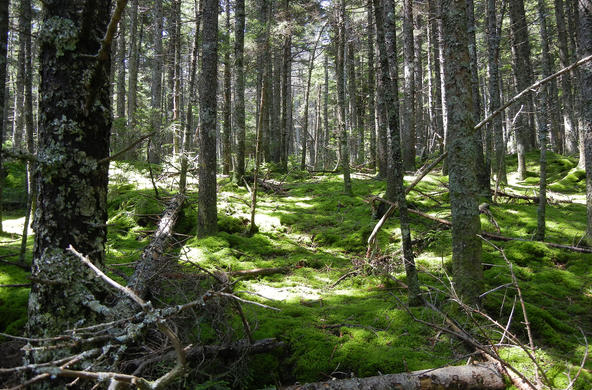Acid rain is a popular term for the atmospheric deposition of rain, snow, sleet, hail, acidifying gases and particles, as well as acidified fog and cloud water. Dr. Gene E. Likens discovered acid rain in North America when working with colleagues at the Hubbard Brook Experimental Forest in the White Mountains of New Hampshire.
"We knew from the very first samples of rain we collected in 1963, that it was very acid, but we didn't know the cause or extent of the environmental problem"
said Likens. The pH of these first samples averaged about 4.1 and was often much lower, up to 100 times more acidic than unpolluted rain.
The pH scale indicates the acidity or base of a solution, like degrees Celsius represent the temperature. Each unit on the pH scale represents a 10-fold difference, so a pH of 4 is 10 times more acid than a pH of 5. Beer has an acidic pH of 4, milk has a neutral pH of 7, and baking soda has an alkaline pH of 9. Natural precipitation typically has a pH level of about 5.2.
Scientists quickly realized that the low pH readings at Hubbard Brook warranted closer scrutiny. Past research has shown that acidic pH levels can have serious environmental consequences. In aquatic and wetland ecosystems a range of organisms, such as salamanders, rainbow trout, frogs and crayfish, die when pH levels fall below 4.5. In addition to harming wildlife, acid precipitation can impact tree vigor and growth, degrade soil quality and lower crop yields. Since the early 1960s, a team of scientists, led by Dr. Likens, has been gathering and assessing long-term data on precipitation chemistry at the Hubbard Brook Experimental Forest. Other scientists here working on the problem of acid rain and air pollution include Dr. Kathleen Weathers, Dr. Gary Lovett, Mr. Donald Buso, and Mr. Thomas Butler.
With low levels of human development and 3,160 hectares (7,200 acres) of unbroken, forested lands, to the casual observer the Hubbard Brook Experimental Forest seems removed from the human-accelerated environmental changes that plague urbanized, industrial and more developed areas. What was causing acidic precipitation to fall in an isolated New Hampshire forest? Furthermore, how could scientists prevent pH levels from rising to levels that would irreparably harm the ecosystem? The results of over forty years of careful research points to one obvious culprit- fossil fuel combustion. Minimizing acid precipitation depends upon curtailing the acid-forming pollutants.
When heating homes, utilizing electricity, or driving vehicles, most of us rely on fossil fuel energy. When combusted, fossil fuels such as coal and oil emit acid-forming nitrogen and sulfur oxides. These compounds mix in the atmosphere, often traveling thousands of kilometers from their original source. As a result, pollutants from power plants in southern New Jersey or southern Michigan can impact pristine forests in undeveloped parts of New Hampshire.
Research at the Hubbard Brook Experimental Forest has made significant inroads into understanding and controlling acid precipitation. Innovations in reducing fossil fuel emissions, such as taller stacks on factories, catalytic converters, and low-sulfur coal, all have been employed in response to results of acid deposition research. Dr. Likens' insight has informed a range of policy measures, including the 1990 Amendments to the Clean Air Act. As a result of globalization, fossil fuel combustion is increasing around the world. If the US is to serve as a model for developing nations, it is important to keep US legislation regulating fossil fuel emissions science-based and strong.
